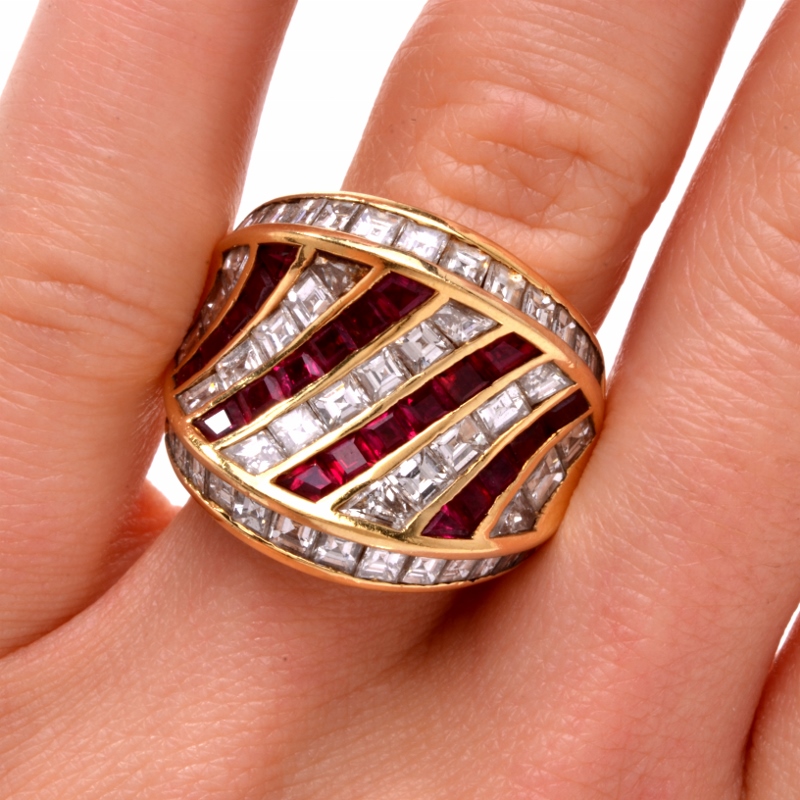
Ruby is the magnificent red variety of the multi-colored ‘corundum’ family of which sapphire is also a member. Millions of years ago as gemstones were being created deep inside the core of the Earth, chrome gave the ruby its vivacious red color, but simultaneously caused a multitude of fissures inside the crystals. Thus only a few ruby crystals enjoyed the conditions necessary for sizable growth with adequate crystallization.
The highly prized rubies from Burma are mainly colored by chromium with non tangible iron, giving them the distinctive blood-red hue, from which derives the term ‘pigeon blood’. Other important ruby deposits exist in Vietnam, and rubies of this region frequently display a slightly purplish hue.
When evaluating ruby rings the most important feature to consider is their color, rendering transparency of secondary importance in determining their value. Inclusions do not impair the quality of rubies, provided they do not decrease the transparency of the stone, nor if they are located in the center. In fact inclusions in ruby could be a proof of its authenticity, advertising its natural origin. Only a perfect cut can emphasize the beauty of tis precious stone in a manner worthy of its Sanskrit name ‘the king of gemstones’.
Historically, rubies were mounted above a peacock feather, specifically the blue quills. This ancient mounting method together with the ‘foil-backing’ technique used during the Georgian and part of the Victorian eras, was done to give a shimmering brilliance to this highly sought-after precious gem.
Should you decide for a ruby rings as a life-time ornament on your finger, you should know some important facts about the special place this gemstone occupies in history and mythology. Ruby, the July birthstone, is cherished and endowed with innumerable attributes by different cultures.
Ancient peoples generally used rubies in amulets to guard them against poisons, plague, evil thoughts, and wicked spirits. A long-held persistent belief is that rubies warned of the presence of poison by growing dark and cloudy and then resumed their brilliance when the danger was past! Some writers have stressed the power of ruby to keep its wearer in health and the mind cheerful. In 1669 Dr. J Schroeder wrote: “You may try nthe goodness of Rubine (the German word for ruby) by the mouth and tongue; for the coldest and the hardest are the best…..It resists poison, sadness, frightful dreams, clears the mind and keeps the body safe”…


